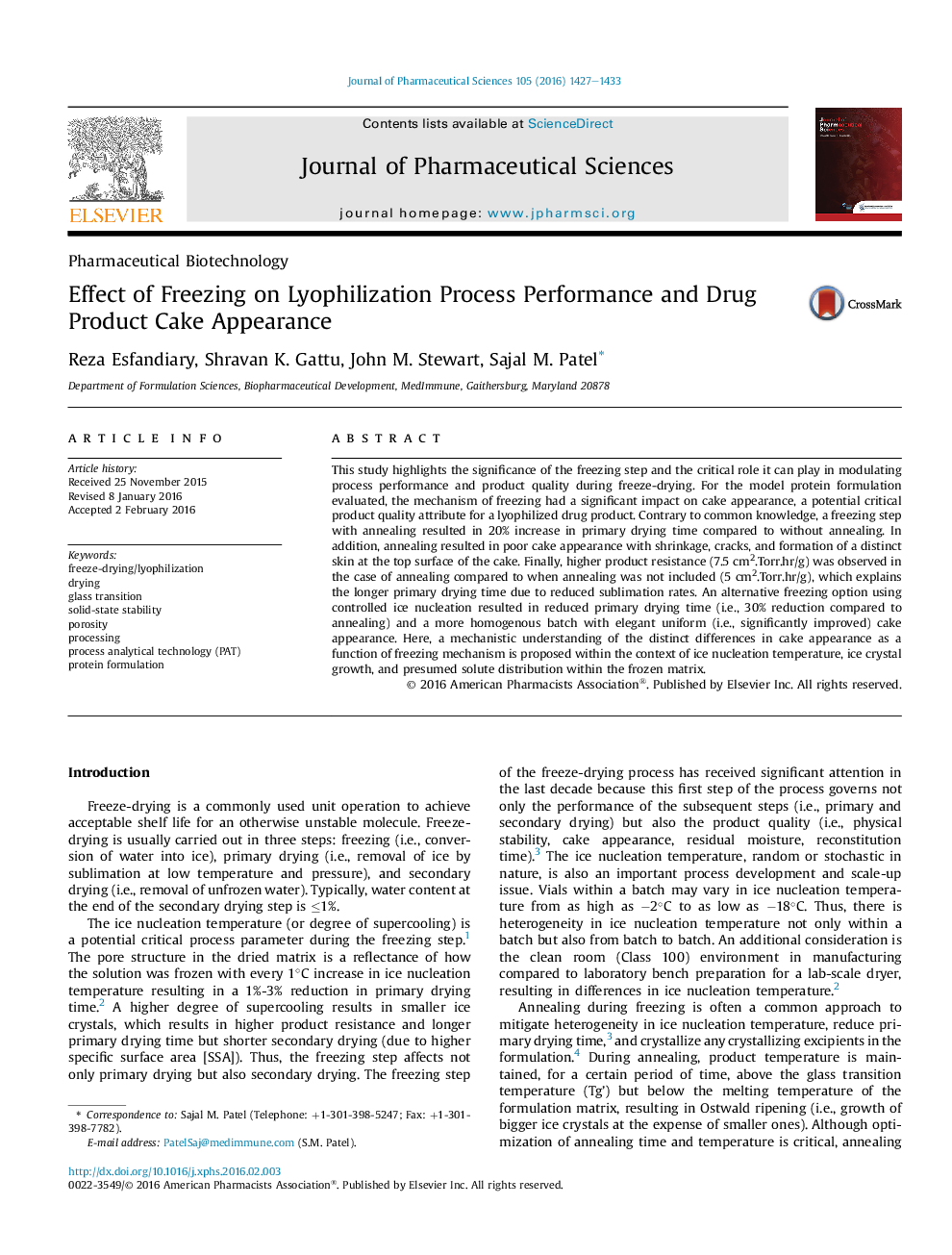| Article ID | Journal | Published Year | Pages | File Type |
|---|---|---|---|---|
| 2484488 | Journal of Pharmaceutical Sciences | 2016 | 7 Pages |
Abstract
This study highlights the significance of the freezing step and the critical role it can play in modulating process performance and product quality during freeze-drying. For the model protein formulation evaluated, the mechanism of freezing had a significant impact on cake appearance, a potential critical product quality attribute for a lyophilized drug product. Contrary to common knowledge, a freezing step with annealing resulted in 20% increase in primary drying time compared to without annealing. In addition, annealing resulted in poor cake appearance with shrinkage, cracks, and formation of a distinct skin at the top surface of the cake. Finally, higher product resistance (7.5 cm2.Torr.hr/g) was observed in the case of annealing compared to when annealing was not included (5 cm2.Torr.hr/g), which explains the longer primary drying time due to reduced sublimation rates. An alternative freezing option using controlled ice nucleation resulted in reduced primary drying time (i.e., 30% reduction compared to annealing) and a more homogenous batch with elegant uniform (i.e., significantly improved) cake appearance. Here, a mechanistic understanding of the distinct differences in cake appearance as a function of freezing mechanism is proposed within the context of ice nucleation temperature, ice crystal growth, and presumed solute distribution within the frozen matrix.
Keywords
Related Topics
Health Sciences
Pharmacology, Toxicology and Pharmaceutical Science
Drug Discovery
Authors
Reza Esfandiary, Shravan K. Gattu, John M. Stewart, Sajal M. Patel,
